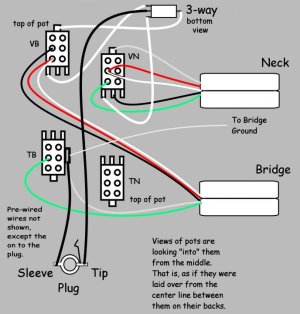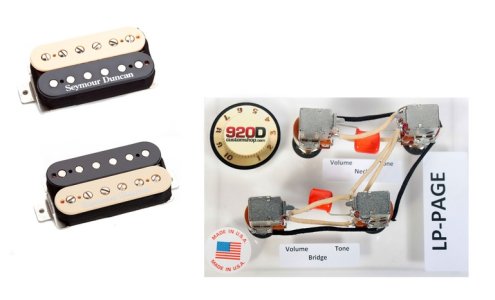If so, what problems, if any, did you have?
I'm working on doing this to a Les Paul right now for the first time. I have Bourns push pulls and have added in Stew-Mac Treble Bleed circuits on the volume controls.
I wired it all up and had a lot of noise unless touching the strings. Classic "ground wire disconnected from bridge" problem. However, the ground wire is connected properly. Also, when I pulled up the bridge tone control, there was no sound. I'm not a noob, and have wired many guitars over the years...not to say that I'm immune to making mistakes...but I did check the basics and I do know my way around a wiring diagram.
Anyway, I could not see a problem with the wiring, but I didn't like how I did the layout, so I rewired the entire circuit, hoping that I missed something the first time around. Once done, I have the exact same problem...noisy when not touching the strings and the sound cuts out when I pull up the bridge tone control.
I've tested continuity between bridge and circuit ground, as well as between the pot casings and the DPDT switch casings. I've also traced my circuit more than once. What the hell am I overlooking!!??
Looking for experiences and advice. Thanks.
I'm working on doing this to a Les Paul right now for the first time. I have Bourns push pulls and have added in Stew-Mac Treble Bleed circuits on the volume controls.
I wired it all up and had a lot of noise unless touching the strings. Classic "ground wire disconnected from bridge" problem. However, the ground wire is connected properly. Also, when I pulled up the bridge tone control, there was no sound. I'm not a noob, and have wired many guitars over the years...not to say that I'm immune to making mistakes...but I did check the basics and I do know my way around a wiring diagram.
Anyway, I could not see a problem with the wiring, but I didn't like how I did the layout, so I rewired the entire circuit, hoping that I missed something the first time around. Once done, I have the exact same problem...noisy when not touching the strings and the sound cuts out when I pull up the bridge tone control.
I've tested continuity between bridge and circuit ground, as well as between the pot casings and the DPDT switch casings. I've also traced my circuit more than once. What the hell am I overlooking!!??
Looking for experiences and advice. Thanks.


